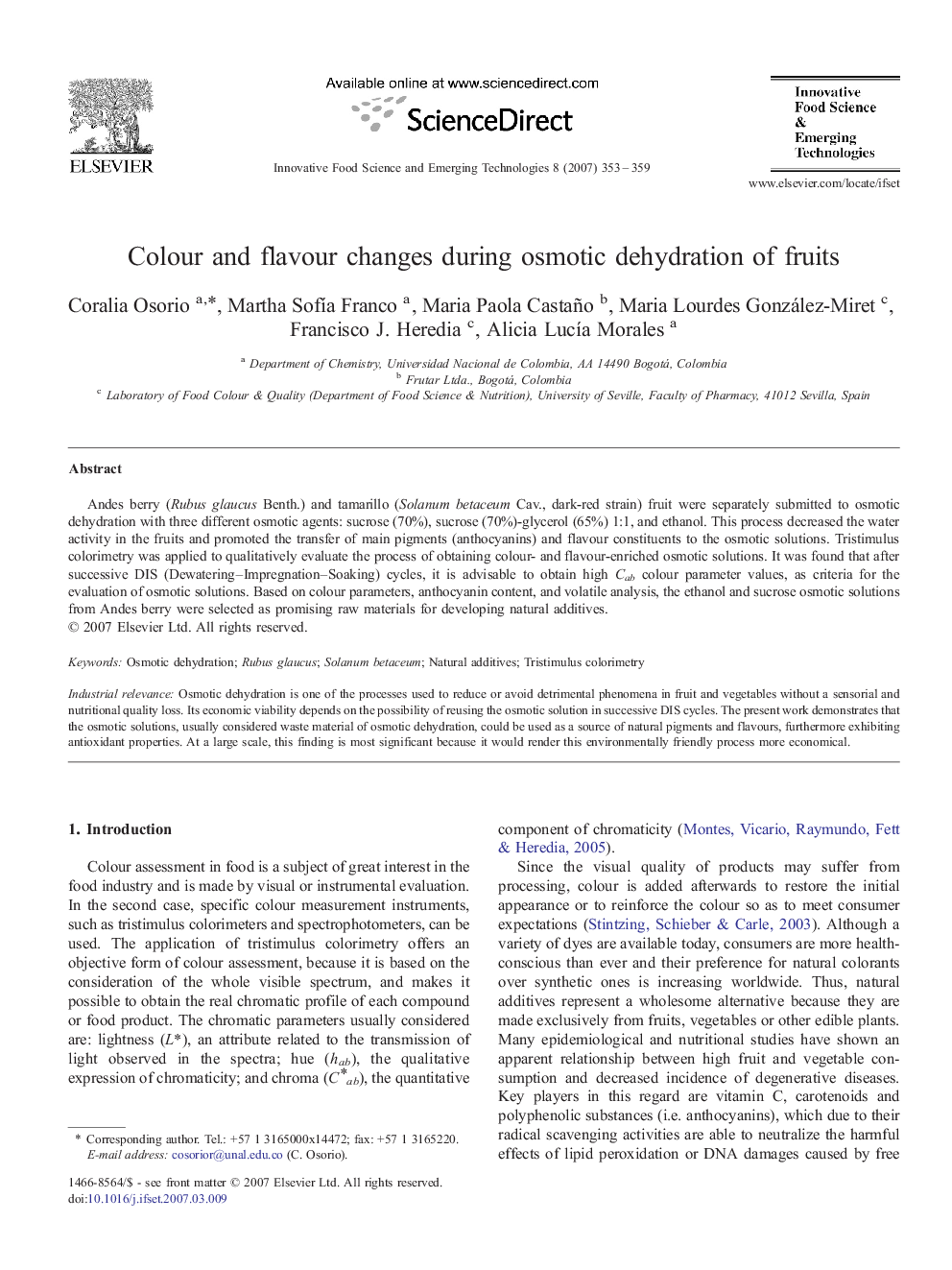| Article ID | Journal | Published Year | Pages | File Type |
|---|---|---|---|---|
| 2087499 | Innovative Food Science & Emerging Technologies | 2007 | 7 Pages |
Andes berry (Rubus glaucus Benth.) and tamarillo (Solanum betaceum Cav., dark-red strain) fruit were separately submitted to osmotic dehydration with three different osmotic agents: sucrose (70%), sucrose (70%)-glycerol (65%) 1:1, and ethanol. This process decreased the water activity in the fruits and promoted the transfer of main pigments (anthocyanins) and flavour constituents to the osmotic solutions. Tristimulus colorimetry was applied to qualitatively evaluate the process of obtaining colour- and flavour-enriched osmotic solutions. It was found that after successive DIS (Dewatering–Impregnation–Soaking) cycles, it is advisable to obtain high Cab colour parameter values, as criteria for the evaluation of osmotic solutions. Based on colour parameters, anthocyanin content, and volatile analysis, the ethanol and sucrose osmotic solutions from Andes berry were selected as promising raw materials for developing natural additives.Industrial relevanceOsmotic dehydration is one of the processes used to reduce or avoid detrimental phenomena in fruit and vegetables without a sensorial and nutritional quality loss. Its economic viability depends on the possibility of reusing the osmotic solution in successive DIS cycles. The present work demonstrates that the osmotic solutions, usually considered waste material of osmotic dehydration, could be used as a source of natural pigments and flavours, furthermore exhibiting antioxidant properties. At a large scale, this finding is most significant because it would render this environmentally friendly process more economical.
